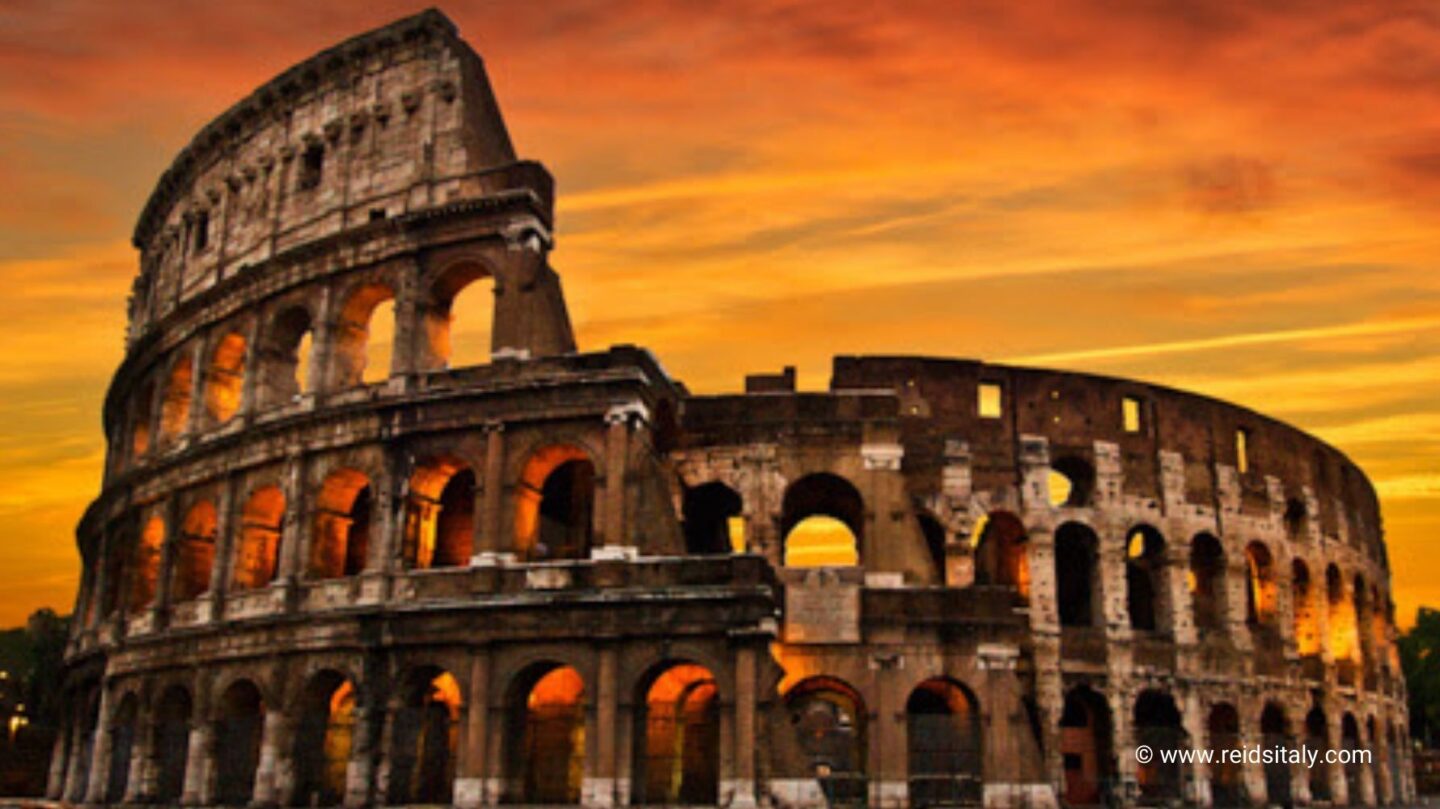A Monument to Imperial Power
The Colosseum, also known as the Flavian Amphitheatre, stands as one of the most iconic symbols of ancient Rome. Construction began under Emperor Vespasian in 70 CE and was completed in 80 CE during the reign of his son, Titus. Built on the site of Nero’s extravagant palace, the Colosseum was intended to restore public favor by offering a space for grand spectacles and entertainment.
With a capacity to hold between 50,000 and 80,000 spectators, the Colosseum was a feat of engineering and architecture. Its construction showcased Rome’s wealth, power, and technological prowess, symbolizing the might of the empire at its height.
The Entertainment Hub of Rome
The Colosseum quickly became the epicenter of public life in ancient Rome, hosting a variety of events that captivated citizens from all walks of life. Gladiatorial combat was among the most popular attractions, where trained fighters—often slaves or prisoners of war—battled for their lives and glory. These fights were a spectacle of skill, courage, and brutality, drawing massive crowds.
In addition to gladiator battles, the Colosseum hosted animal hunts, known as venationes, where exotic beasts such as lions, elephants, and tigers were pitted against hunters or each other. Public executions and mock naval battles, achieved by flooding the arena, were also part of the entertainment repertoire.
These events were not merely for amusement; they served a political purpose. By providing free entertainment, emperors ensured the loyalty of the populace, adhering to the Roman principle of bread and circuses (panem et circenses)—keeping the masses content through food and entertainment.
Architectural Marvel of the Ancient World
The Colosseum was more than just a venue; it was a marvel of Roman engineering. Its elliptical shape ensured optimal visibility for all spectators, while its tiered seating system reflected the social hierarchy of Rome, with senators and elites occupying the best seats near the arena.
The structure was built using a combination of travertine, tuff, and concrete, materials that made it both durable and imposing. An intricate system of vaults and arches allowed for the massive structure’s stability, while underground tunnels and chambers, known as the hypogeum, enabled complex stagecraft, including the sudden appearance of animals and gladiators in the arena.
The Colosseum’s design influenced the construction of modern stadiums, highlighting its enduring legacy as a blueprint for large-scale entertainment venues.
The Decline and Transformation
With the decline of the Roman Empire, the Colosseum fell into disuse. By the 6th century, it was no longer a venue for games and spectacles. Over the centuries, it suffered damage from earthquakes, looting, and neglect. Stones from the Colosseum were repurposed for other buildings, including churches and palaces, contributing to its gradual deterioration.
Despite this, the Colosseum remained a symbol of Rome’s grandeur. In the Middle Ages, it was used as a fortress, and later as a Christian site, with the Catholic Church declaring it a place of martyrdom.
A Timeless Symbol of Rome
Today, the Colosseum is one of the most visited tourist attractions in the world, drawing millions of visitors annually. As a UNESCO World Heritage Site, it stands as a testament to the ingenuity and ambition of the Roman Empire. It not only embodies the architectural brilliance of ancient Rome but also serves as a reminder of its cultural and political complexities.
The Colosseum remains the heart of Rome, connecting modern visitors with the glory and spectacle of the ancient world, ensuring its place as an enduring symbol of power, perseverance, and human achievement.
